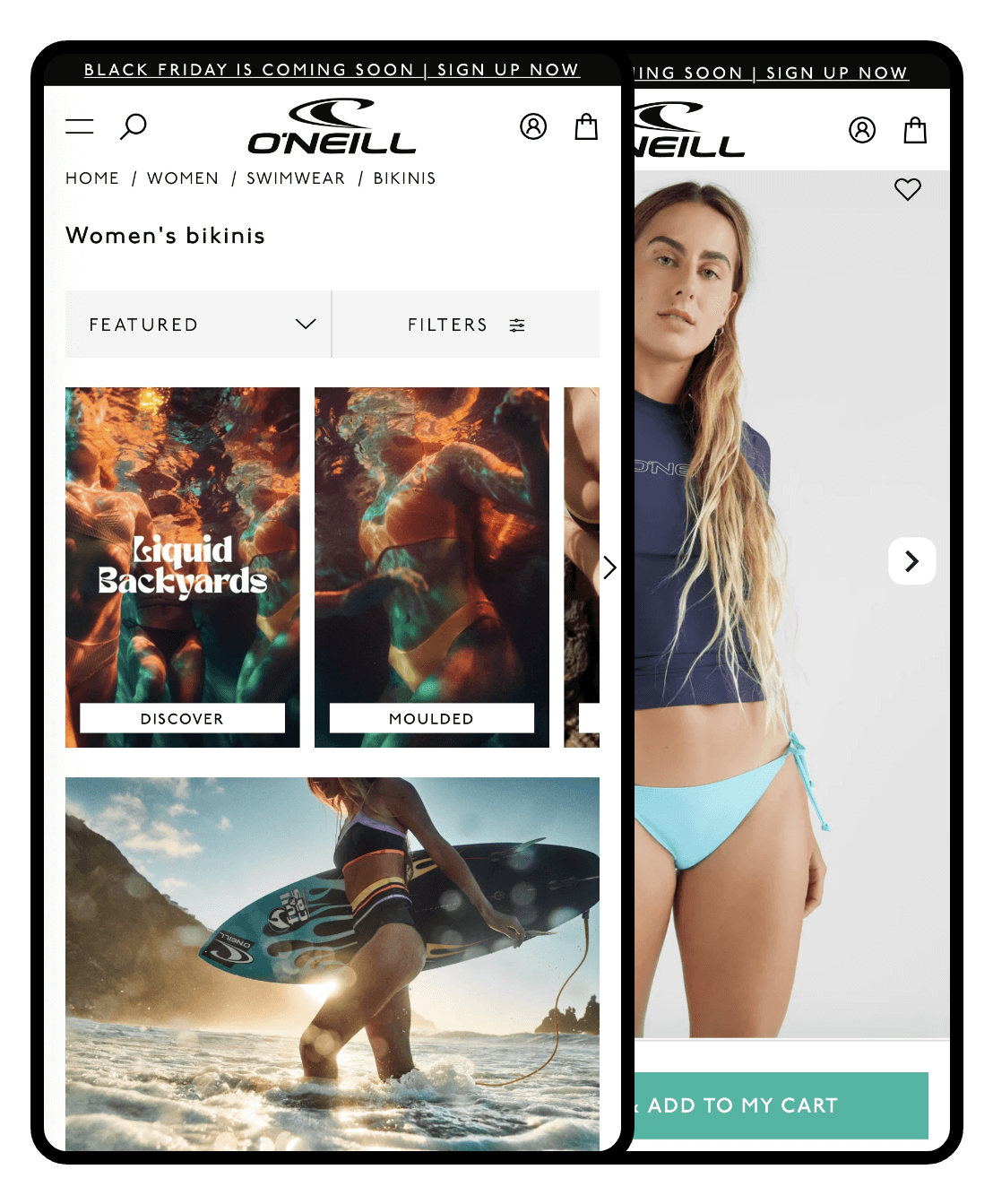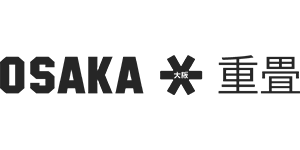
More speed and freedom for Osaka with Shopify 2.0 and Shopify Markets
Osaka is a Belgian brand selling hockey gear since 2011 - which recently moved into padel as well. They are known for their clean, Japanese aesthetic and attention to design, functionality and sustainability. Although the brand is predominantly B2B focused (the B2B branch is a lot bigger than the B2C), it also sells D2C via their international webshop Osakaworld.com. Just before BFCM 2022 their online store moved to Shopify 2.0, which offered a lot more freedom and flexibility in terms of content.
CLIENT
OsakaINDUSTRY
Lifestyle, FashionTECHNOLOGY
Shopify webshopsPACKAGE
Webshop rebuild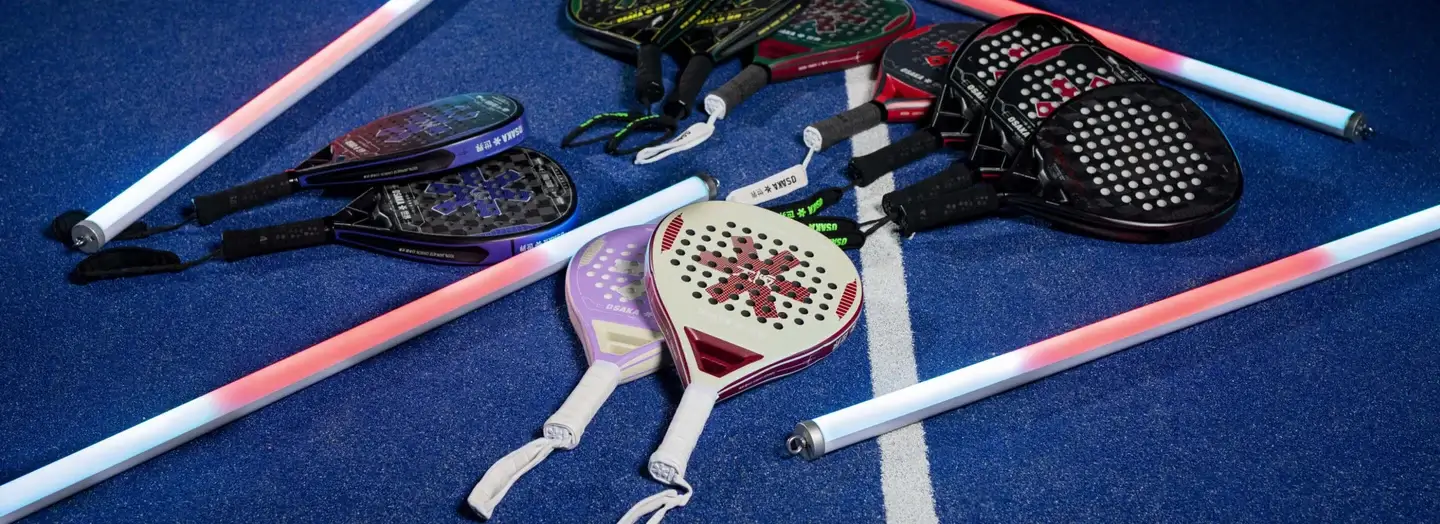
Services we delivered
Store Development

UX/UI Design
Email Marketing

Internationalization
B2B
.png)
Shopify 2.0: faster and more flexible
The Code-Osaka collaboration started about three years ago when Caroline Smedts, Osaka’s e-commerce manager, got into a conversation with Code during the Webwinkelvakdagen in Utrecht. Osaka was looking for a new platform for its B2C branch - and Shopify ticked their boxes.
Three years later, we gave the Osaka website a substantial refresh. Caroline, who designed the Shopify webshop herself, reports: “I am thrilled with the ‘sections everywhere’ feature in Shopify 2.0. I hardly have to contact Code anymore for help with content adjustments.” The site’s speed has improved a lot as well, from 32 to 70 on mobile. “You tend to neglect that a bit, but of course it really is important.”
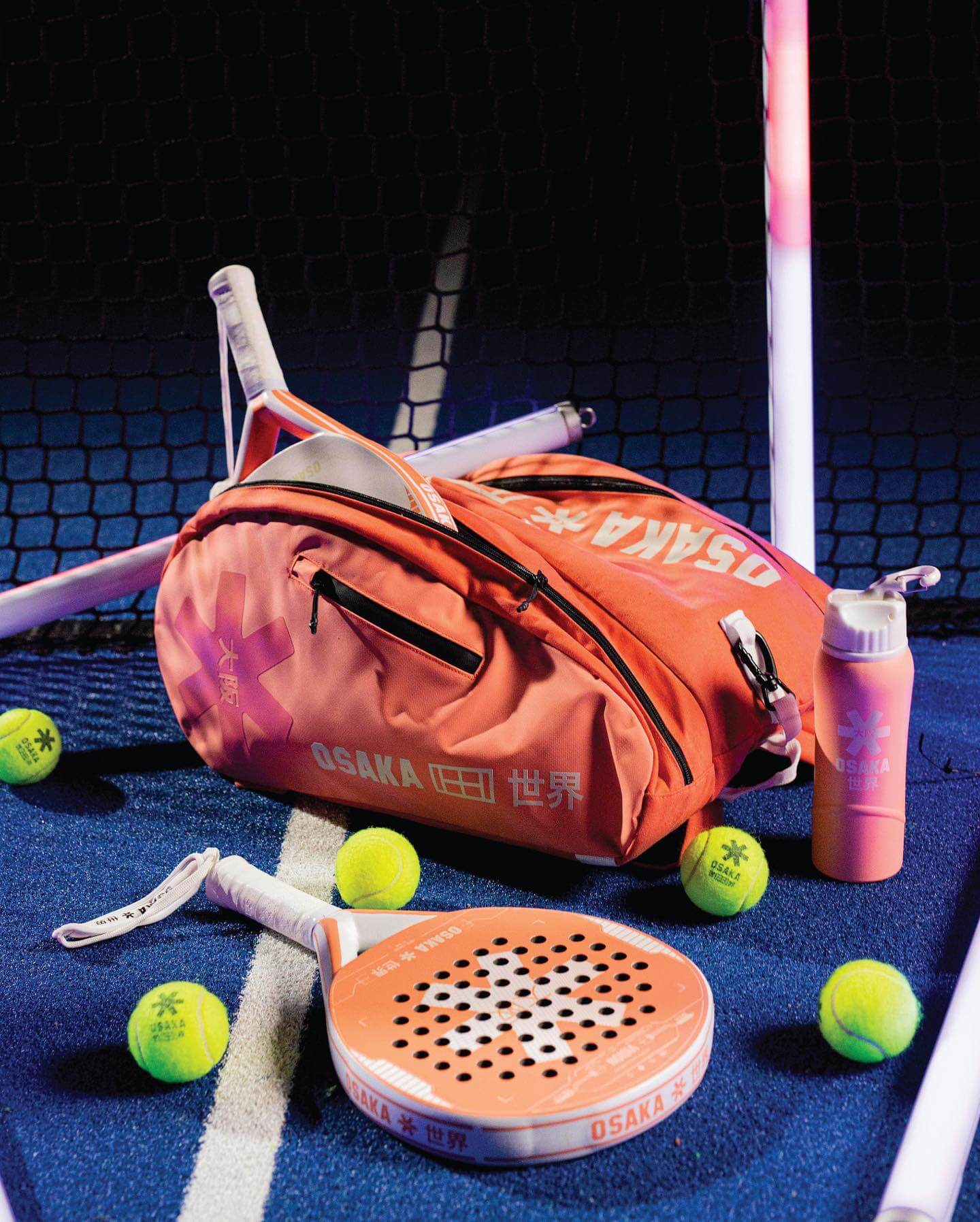
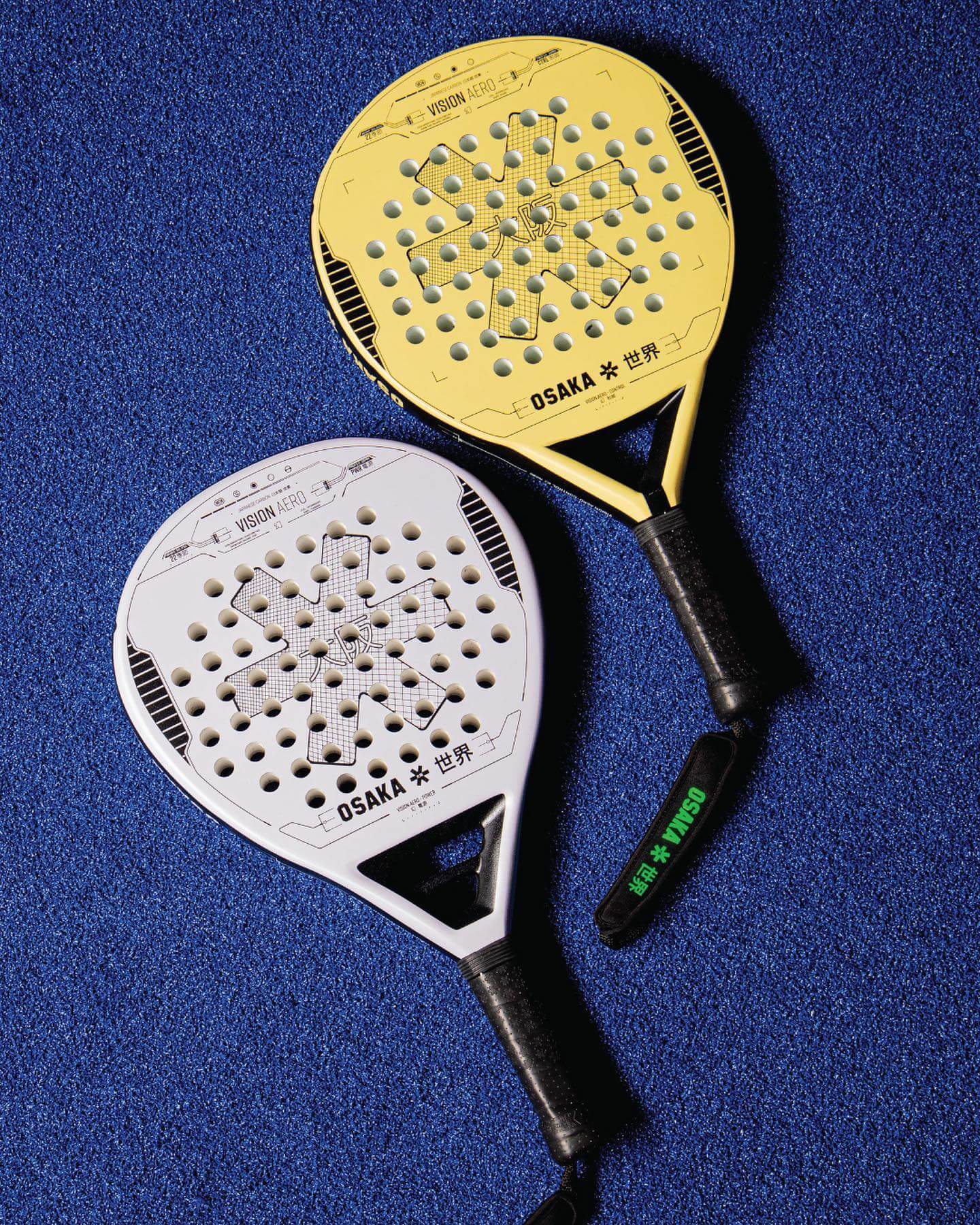
Improved UX features: Quick Shop, wishlists, multi-filtering
The switch to 2.0 took four sprints - about eight weeks. Caroline explains: “At busy periods we put it on hold for a bit. In August and September we launch new products for instance, while October is a relatively quiet month. That’s when we did the last content adjustments and launched the new webshop just in time for BFCM. There was no need for any troubleshooting after the launch, so it was perfect.”
In addition to more flexibility and faster loading speeds, the webshop received a host of UX improvements. Caroline: “In terms of design and functionality, we kept the successful elements of the old site, and added a handful of new features. Such as the Quick Shop feature, with which customers can add products to their cart straight from the collection page.” Customers can now have multiple wishlists as well (one for hockey, one for padel for instance), get pop-up notifications from their cart, and thanks to the advanced multi-filtering in Shopify 2.0 products can now get multiple tags, which makes selecting products a lot easier.
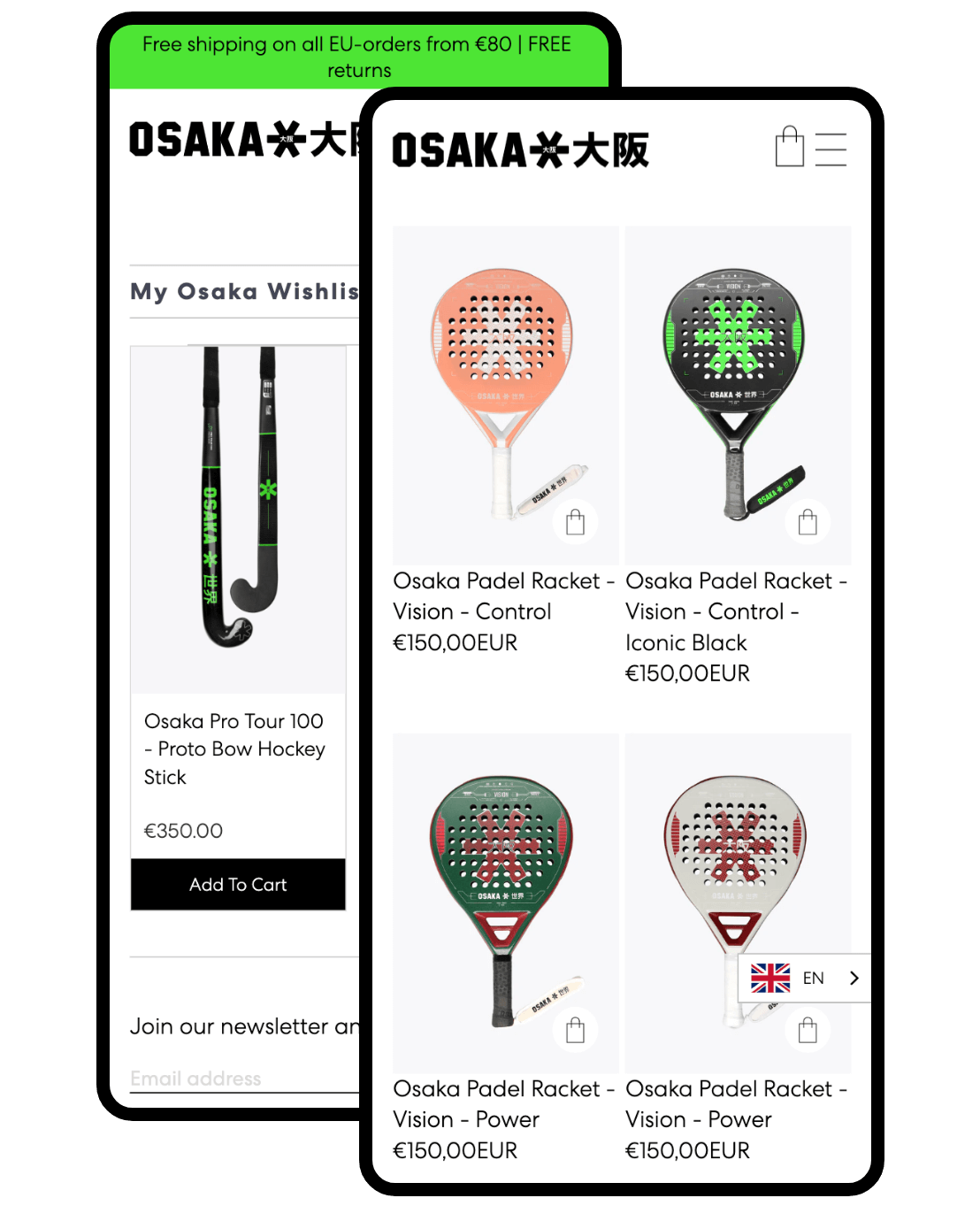
Osaka conquers Europe and the US with Shopify Markets
Also new for Osaka is Shopify Markets, which the brand started using in September 2022 to manage its international sites - in combination with the translation app Weglot. Caroline thinks it’s a godsend: “I am on my own, so managing one site is enough for me. Shopify Markets works very well for that. Our .com website caters to a number of European countries, but as of this year the US is our biggest market. Before Markets we used a currency converter app, but it didn’t work very well and it was confusing for our customers.
The combination of Markets and Shopify Payments has no issues with English Pounds and American Dollars.” The option to adjust homepages per region would make Markets even more useful to Caroline. “In the US hockey is very much a girls’ activity, while our EU audience is a lot more diverse. Of course you want your homepage to reflect that. Shopify has this feature on its list, but hasn’t announced yet when it’s available.”
Osaka’s favorite Shopify apps: Limespot, Algolia and Klaviyo
Of course, Osaka decided to keep the features that worked well on the old site, such as the cross-selling app Limespot and the product configurator, with which customers can design their own hockey stick. The search-app Algolia also had to come along. “We use Algolia because it’s just a tad smarter than the native search function in Shopify,” Caroline says. “Algolia only needs half a word to show visitors products, including a thumbnail picture. And we receive a monthly email from Algolia with our most searched terms, so that we can add them to our product texts and have them found better. Very useful!”
Something else Osaka kept are the Klaviyo email flows that Caroline created with our Klaviyo team. “A lot of our revenue comes from the Klaviyo emails and campaigns, about 20 to 30%.”
→ Want to start with next level email marketing? Read more about our Klaviyo plan here!
And of course there is also the still very pleasant collaboration with Code. Caroline is still happy about the collaboration with project manager Jeroen and developer Bogdan. “We even went to visit the Code office a few times, from Antwerp, that was nice! We felt very welcome there.” Does she have any advice for other e-commerce businesses based on her experiences with this project? Caroline answers enthusiastically: “Switch to Shopify 2.0, definitely! ‘Sections everywhere’ simply gives you much more freedom, and it’s nicer to work with.” At Code we wholeheartedly agree.
We hardly have to pay any attention to our Klaviyo email flows and campaigns, when about 20 to 30% of our revenue comes from Klaviyo. Definitely a big plus!


